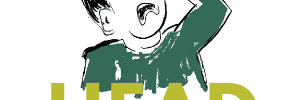Next Tuesday, President Obama will give the annual State of the Union (SOTU) address to Congress and the nation, followed by responses from the Republican Party and the Tea Party. We’ll share our thoughts about the addresses that evening on our Voices for Human Needs blog, and we hope you’ll join…
Archives: Voices
Fact of the Week: One-Third of State Budgets Comes from Federal Funds
States rely heavily on money from the federal government. While taxes make up the majority of state general revenue, federal money makes up roughly 32 percent of that total. In separate reports, the National Priorities Project and the Tax Foundation both used data from the U.S. Census Bureau to come…
Head Smacker: House Jeopardizes Health Insurance for Workers While Claiming to Help Them

The House used the first week of the new Congressional session to pass a bill that puts health coverage and paychecks for Americans workers at risk and raises the federal deficit by $53 billion. That’s a Head Smacker in and of itself. But what makes this move even more of…
One Young Person’s Story of Homelessness
Dae’Jah was 13 when she first became homeless. She clearly remembers the day her mother told her they had to pack up everything they had and leave their house because they were being evicted. Her mom had lost her business and was no longer able to make the mortgage payments….
Fact of the Week: Child Care Cost is Nearly Half of Income for a Family at the Poverty level
With the start of the new year, many of us returned to work or school after some time off over the holidays. While parents are hard at work at jobs or bettering their education to provide for their children, roughly 11 million children younger than age five are in some…
Head Smacker: The Rationale Construction Industry at Work

When the Republican-majority Congress starts up in January, they will want to set the stage for tax reductions for corporations and the wealthy. The Rationale Construction Industry is doing its best to help. Its work was in evidence in an opinion piece by Stephen Moore of the Heritage Foundation printed…
Asset Poverty in America
Among the many troubling signs that the U.S. economy isn’t really recovering and that inequality is becoming more deeply ingrained is the lack of savings by most Americans and the tremendous disparities in assets between a wealthy few and much of the population. Although the stock market has rebounded spectacularly…
Fact of the Week: Child Poverty Rates Top 50 Percent in More Than 40 U.S. Counties
At least one out of every two kids is poor in more than 40 counties in America, data released Wednesday by the Census Bureau revealed. The 2013 data is from the Small Area Income and Poverty Estimates (SAIPE) program, which provides one-year income and poverty statistics for all 3,140 counties…
Expand Medicaid Now
Medicaid expansion is critical to achieving the Affordable Care Act’s (ACA) goal of providing access to affordable health coverage. The expansion was originally intended to be required of all states participating in the Medicaid program, but the 2012 Supreme Court ruled it optional. This has led 23 states to refuse…
Health for All
Health care is important because….. While the Affordable Care Act is already improving the health and lives of millions of Americans, more than 40 million people in the United States still do not have health insurance. As a result, millions aren’t getting the care they need, jeopardizing both their health and…
Vivek Murthy for Surgeon General
The Senate should not go home without confirming Dr. Vivek Murthy for Surgeon General. He has been endorsed by over 100 health organizations, including the American Heart Association, the American Public Health Association, and many associations representing physicians, nurses, and public health experts. Throughout his career, he has founded organizations…
Fact of the Week: Young Adults More Likely to Be Poor Now than in 1980
New data released by the Census Bureau last Thursday show that young adults age 18-34 are more likely to live in poverty now than they were in 1980. The Census Explorer’s Young Adults: Then and Now looks how this age group has changed in the last several decades in a…
